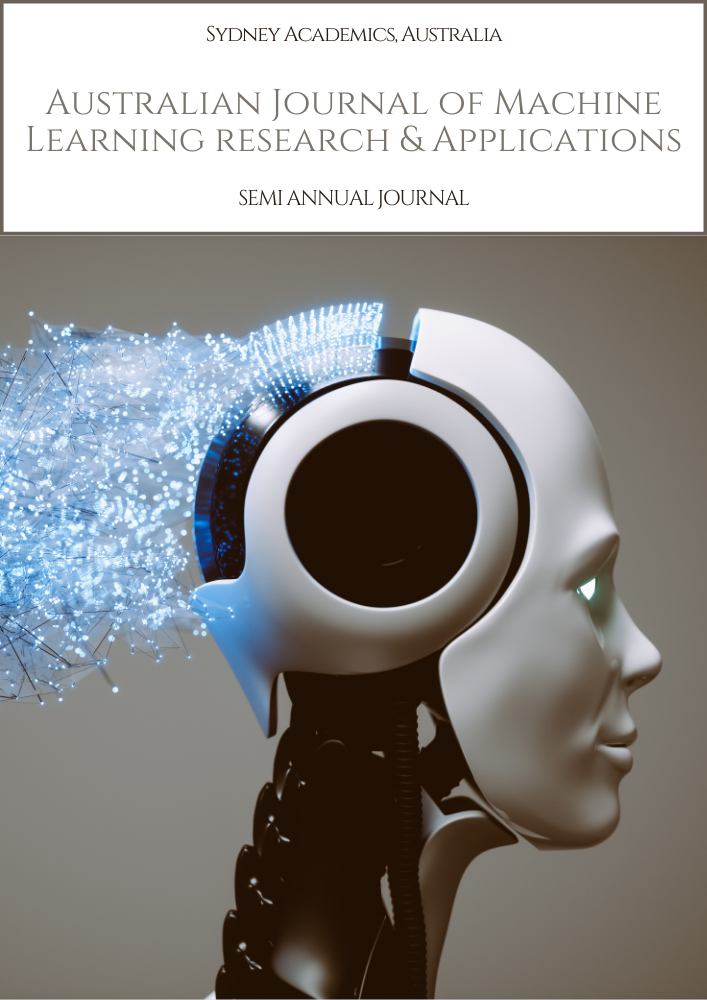AI-Powered Financial Market Analysis
Abstract
People thrive when they can make good, informed decisions. On an institutional or large organizational level, decision-making is central to operations. Artificial intelligence, by processing data efficiently and quickly to generate insights and predictions, has the potential to play a pivotal role in decision-making, and the financial markets are no different. Financial markets are decoupled from the underlying economy, so their rapid evolution and new features, such as algorithmic and high-frequency trading, pose challenges. Traditional forecasting methods are no longer as effective in investment as they used to be, and so new, advanced analytical tools are prized. The volume, variety, and velocity of data in the financial markets are constantly increasing, and as behavioral information is integrated, the complexity continues to multiply. Without innovative approaches, along with infrastructure to support them, gaining that sought-after edge in investing is crucial. AI applications can facilitate the end investor in several ways, aiding the decisions made by portfolio managers or traders. By harnessing the technology, investors can manage risks more effectively, adapt to dynamic market conditions, enhance returns, and boost efficiency. In the essay that follows, we will explore state-of-the-art AI technology applications in financial economics more broadly, as well as discuss machine learning, deep learning, and sentiment analysis techniques in more depth. Key general kinds of learning applied in finance include supervised, unsupervised, and semi-supervised learning, and reinforcement techniques. We will also overview how AI applications can be used to screen investment opportunities, assist asset-class allocation choices, generate optimal strategies, project macroeconomic and fixed income research, and support asset allocation principles including stock selection and risk management. The essay will appeal to readers interested in finance, machine learning, or the financial applications of AI and data science. In today’s innovation-driven financial markets, where machines can emulate certain human capabilities but outperform in their efficiency and effectiveness – beating the S&P 500, for example – today’s financial exchange transactions could be categorically defined as machine learning in action. As a result, over the past couple of decades, FinTech start-ups and incumbents have migrated their businesses to AI-based systems, allowing them to cash in on growing revenues.
Downloads
References
Tamanampudi, Venkata Mohit. "Automating CI/CD Pipelines with Machine Learning Algorithms: Optimizing Build and Deployment Processes in DevOps Ecosystems." Distributed Learning and Broad Applications in Scientific Research 5 (2019): 810-849.
Thuraka, Bharadwaj, et al. "Leveraging artificial intelligence and strategic management for success in inter/national projects in US and beyond." Journal of Engineering Research and Reports 26.8 (2024): 49-59.
Katari, Pranadeep, et al. "Remote Project Management: Best Practices for Distributed Teams in the Post-Pandemic Era." Australian Journal of Machine Learning Research & Applications 1.2 (2021): 145-167.
J. Singh, “AI-Driven Path Planning in Autonomous Vehicles: Algorithms for Safe and Efficient Navigation in Dynamic Environments ”, Journal of AI-Assisted Scientific Discovery, vol. 4, no. 1, pp. 48–88, Jan. 2024
Machireddy, Jeshwanth Reddy. "Assessing the Impact of Medicare Broker Commissions on Enrollment Trends and Consumer Costs: A Data-Driven Analysis." Journal of AI in Healthcare and Medicine 2.1 (2022): 501-518.
S. Chitta, S. Thota, S. Manoj Yellepeddi, A. Kumar Reddy, and A. K. P. Venkata, “Multimodal Deep Learning: Integrating Vision and Language for Real-World Applications”, Asian J. Multi. Res. Rev., vol. 1, no. 2, pp. 262–282, Nov. 2020
Ahmad, Tanzeem, et al. "Explainable AI: Interpreting Deep Learning Models for Decision Support." Advances in Deep Learning Techniques 4.1 (2024): 80-108.
Tamanampudi, Venkata Mohit. "Autonomous Optimization of DevOps Pipelines Using Reinforcement Learning: Adaptive Decision-Making for Dynamic Resource Allocation, Test Reordering, and Deployment Strategy Selection in Agile Environments." Distributed Learning and Broad Applications in Scientific Research 10 (2024): 360-398.
Kodete, Chandra Shikhi, et al. "Determining the efficacy of machine learning strategies in quelling cyber security threats: Evidence from selected literatures." Asian Journal of Research in Computer Science 17.8 (2024): 24-33.
Thota, Shashi, et al. "Few-Shot Learning in Computer Vision: Practical Applications and Techniques." Human-Computer Interaction Perspectives 3.1 (2023): 29-59.
Tamanampudi, Venkata Mohit. "Leveraging Machine Learning for Dynamic Resource Allocation in DevOps: A Scalable Approach to Managing Microservices Architectures." Journal of Science & Technology 1.1 (2020): 709-748.
J. Singh, “Autonomous Vehicles and Smart Cities: Integrating AI to Improve Traffic Flow, Parking, and Environmental Impact ”, Journal of AI-Assisted Scientific Discovery, vol. 4, no. 2, pp. 65–105, Aug. 2024
S. Kumari, “Cloud Transformation for Mobile Products: Leveraging AI to Automate Infrastructure Management, Scalability, and Cost Efficiency”, J. Computational Intel. & Robotics, vol. 4, no. 1, pp. 130–151, Jan. 2024.


